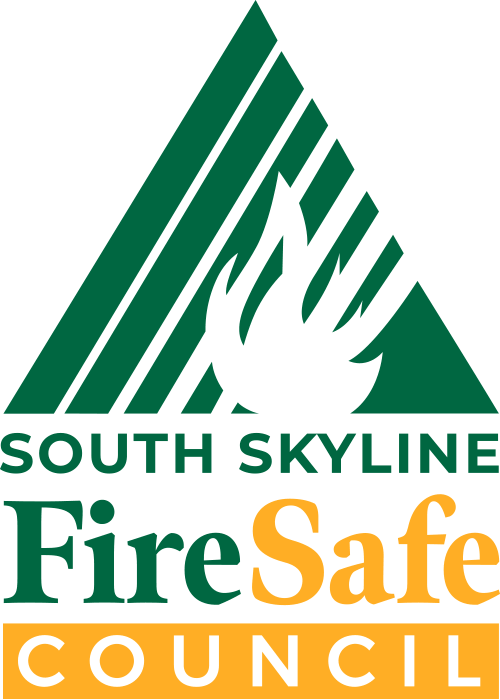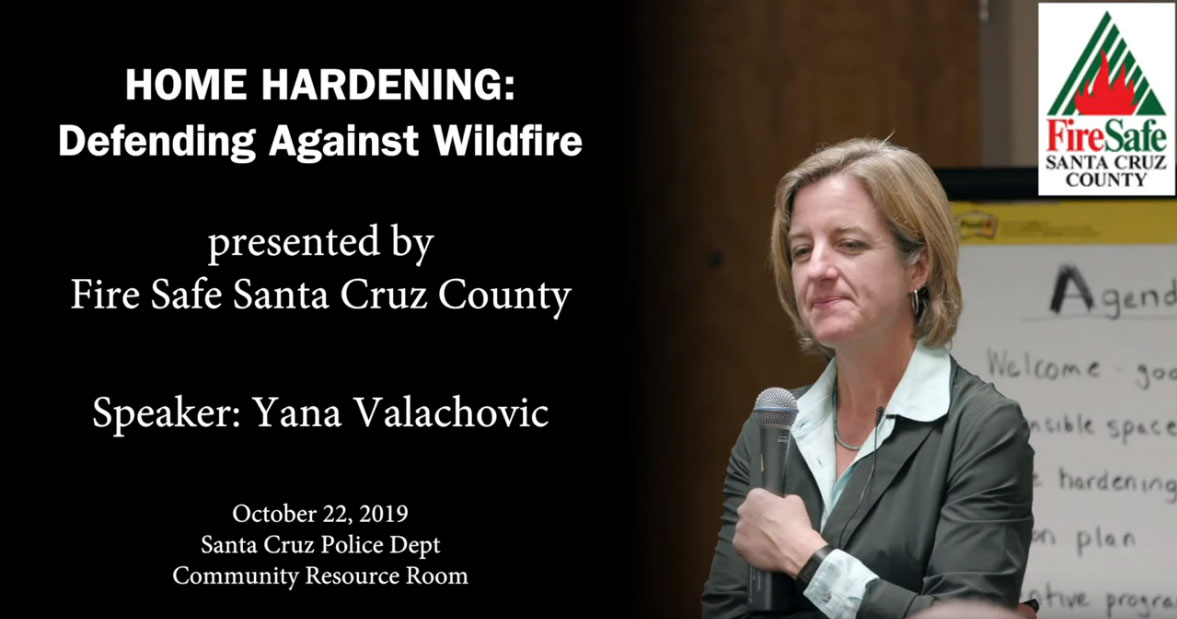New guidelines for making your home more fire safe have been developed in recent years.
California has had a significant increase in very large and destructive fires. These fires, sometimes called “Megafires”, occur when there are hot, high winds and low humidities. These conditions help to create a firestorm which showers embers down like rain. Foresters, firefighters and other wildfire specialists have studied which houses have survived these firestorms and which haven’t, and determined the specific house conditions and designs which helped to save homes.
Based on these findings, guidelines have been developed under the general category of “Home Hardening” that focus on improvements to homes and outbuildings and the first 5 feet from these structures. These guidelines add to the Defensible Space work we’ve been doing for years that reduces flammable materials like vegetation from 0 – 30 feet and 30 – 100 feet from our homes.
In the fall of 2019, Fire Safe Santa Cruz County hosted a series of presentations on Home Hardening.
Video Transcript
Yana Valachovic is a UCCE Forest Advisor and a leader in this research. She presented important information on how to make your home more fire safe.
We highly recommend that everyone living in high fire risk areas view Yana’s presentation and take the necessary steps to protect your home.
For example, install metal screens on your rain gutters and vent screens with a 1/8″ mesh size. Cover over or replace all 1/4” screen with 1/8” screens.

